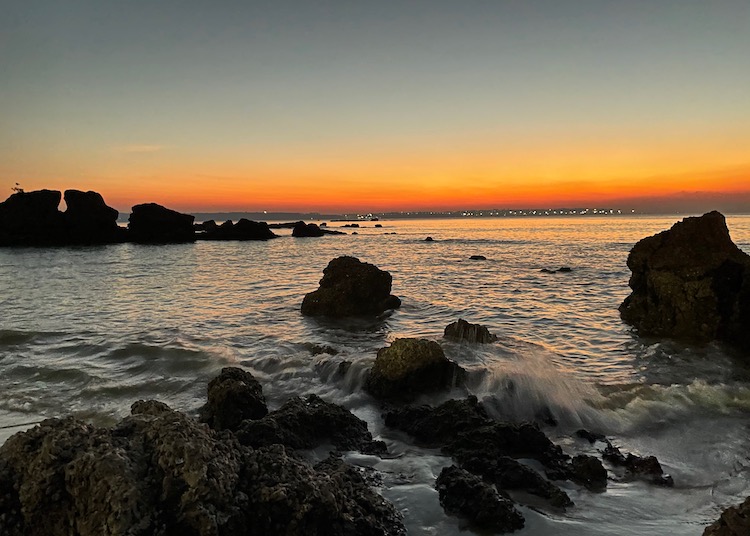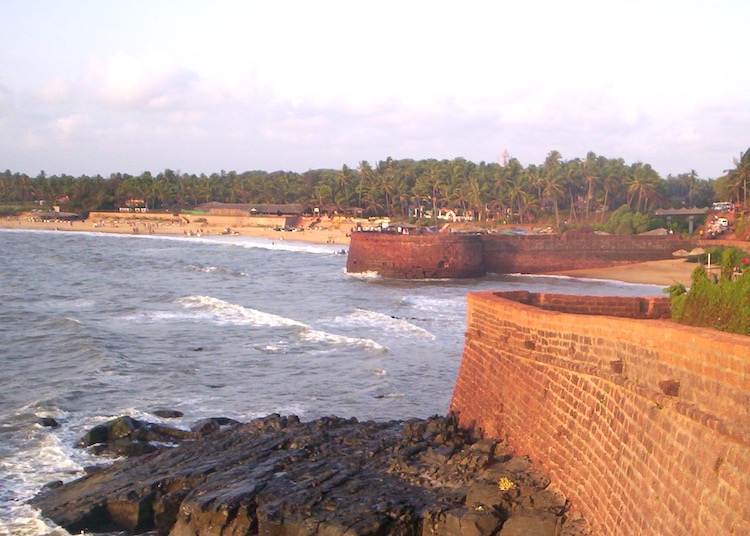Venerable Fr. Agnelo, Pilar Goa

Characteristically, he grew up manifesting qualities of gentleness, love, and purity, along with humility and obedience, combined with a strong sense of self-discipline.
He was not given to much talking, unlike the boys of his age, and usually preferred silence and prayer. Teaching catechism to the boys was his favourite childhood hobby. One of his uncles, Fr. Lazaro Fortunato Souza, seeing his teaching activities, uttered these prophetic words: Agnelo will one day be a virtuous priest and a renowned preacher.
Both these prophecies came true, for during his studies for the priesthood he proved to be brilliant and godly and never missed the daily Mass at the Seminary of Rachol, where he completed his discourse of theology with distinctions.
Fr. Agnelo had set his sights high in the service of God and aimed at cultivating assiduously all the priestly virtues.
After completing his second grade examination of the Primary Curriculum, helped by his eldest brother Manuel Aristedes (also a priest), Agnelo studied Latin for 2 years in a private institution. He then joined the minor seminary at Mapusa and later went to Rachol for higher studies in philosophy and theology. He believed he could do better in a religious order. Agnelo was admitted as a candidate in the Society of Pilar on July 17, 1897, the feast day of Our Lady of Pilar, patroness of the convent and the society. While still a candidate, he was ordained deacon on December 18th, 1897, at the monastery of Santa Monica, and five months later, on May 22, 1898, he made his first profession as a member of the Missionary Society of Pilar. The Society of Pilar was founded by Fr. Bento Martins in 1887.
On September 24, 1899, the feast of Our Lady of Merces, the then Patriarch Archbishop of Goa (the first Patriarch of the East Indies), Dom Antonio Sebastiao Valente, ordained him a priest at the Se Cathedral of Old Goa, and celebrated his first holy mass at the Monastery of Pilar. From then on, Fr. Agnelo’s spiritual life can be studied in two phases.
The first consisted of ten years he spent at Pilar more or less in seclusion, prayer, and meditation, occasionally going out on pastoral work at the request of his superiors.
It was a preparation par excellence for his later apostolate as a pastor, confessor, preacher, and spiritual guide.
Fr. Agnelo decided to dedicate himself entirely and perpetually to the service of God. On completion of the second five-year period of his profession, Fr. Agnelo made a solemn promise of perpetual dedication to the service of the Society on September 8, 1908, the day of the Nativity of Our Lady, on the steps of the altar of Our Lady of Pilar, in the presence of his superior and brother members of the Society.
He was appointed on September 8, 1908, as Confessor to the Seminarians in Rachol, and by the influence of his personal life of austerity, holiness, and benevolence, he strengthened the vocation of many a young penitent.
From 1910 to 1917, he served as the missionary vicar of Shiroda in Goa. On December 10, 1909, Fr. Agnelo was appointed Missionary Vicar of Kumta in North Kannada by the Patriarch of Goa, Dom Matheus de Olivera Xavier, and took charge of his post on January 6, 1910. He served in Kumta until May 21, 1917, after which he was transferred to Goa as curate of the Sanvordem Church as curate.
He left in all these places a memorable legacy of his holy living and pastoral concern. He had an intense devotion to the Blessed Sacrament and spent a few hours each night in adoration.
Fr. Agnelo was appointed Spiritual Director of the ‘internal’ students of the Rachol Seminary on May 20, 1918. On April 15, 1920, he was confirmed as Spiritual Director of the Seminary as well as Director of the Apostleship of Prayer. He held both offices till the very end.
The concern and interest of Fr. Agnelo for the well-being of the seminarians extended also to their material wants. He assisted poor students with money, his left hand not knowing what his right hand gave. He realised what expenses were incurred by parents who sent their sons to the seminary, especially when they came from less privileged families. Regarding this, he said to one of the professors, It is not necessary to be very scrupulous about passing a student, but you have to be scrupulous in failing him, for thereby he suffers the loss of his money, his energy, and the year of the priesthood.
Fr. Agnelo was also an impressive preacher, not because of any flourish of rhetoric but because every word he spoke from the pulpit came from the depths of his heart.
In 1927, his weak health seemed to be breaking down. The ‘beast of burden’ as he used to call his body, could not stand the strains any longer of his ceaseless labours, austerities, and vigils in spite of medical care. When his condition appeared to have slightly improved, he returned to the seminary, even though he already had a pre-sentiment that his death was drawing near.
In the meantime, the feast of the Sacred Heart drew near. Fr. Agnelo was greatly devoted to the Sacred Heart, and his superiors, seeing that his health had improved due to medical treatment, asked him to preach the novena of the Sacred Heart in the Rachol Seminary, where the feast was celebrated in the month of November.
Classes and novenas followed each other until the evening of November 19, 1927, at vespers of the feast, when the Blessed Sacrament was exposed. Fr. Agnelo mounted the pulpit and began his discourse. That evening, his usual fire and eloquence seemed to have deserted him. His pitch was low, and as he continued speaking, his voice became fainter and fainter. The end of the sermon was early, and as the saintly priest knelt for a final thanksgiving prayer in the pulpit, he lost balance and was carried away in a helpless but conscious state. He insisted on being laid on a bench in the corridor of the church, where he lay devoutly with folded hands to receive the benediction of the Blessed Sacrament that followed the end of the vespers.
But he was still conscious and desired to be laid on a bench in the corridor, from where he received the Benediction of the Blessed Sacrament that followed the end of Vespers. Fr. Agnelo had suffered a coronary thrombosis with paralysis of the left arm and leg. The treatment was administered all at once, as the Last Sacrament called for. When asked if he wished to make his confession, the saintly priest revealed with a decisive nod of his head that he was really prepared for the end. He received the last rites and then lapsed into a coma. He had often desired to die on the feast of the Sacred Heart, and the Lord heard his prayer.
On the following day, the funeral was very largely attended by people from all corners of Goa, eager to pay their last tribute to a saintly priest.
The funeral was solemn, but what impressed everyone most was the vast crowd that attended it. People gathered from distant corners of Goa to pay their last tributes to the saintly priest. Everyone felt that a saint had passed away. The parish priest of Rachol, who conducted the last rites, said after the funeral, ‘I have just laid a saint to rest’.
The sanctity of Fr. Agnelo’s life rapidly spread all over Goa and beyond, and drew many pilgrims to visit his grave, seeking cures and extraordinary favours. The Patriarch-Archbishop of Goa at the time, Dom Teotonio Viera de Castro, on seeing one day a crowd of pilgrims at the grave, remarked: “Our Fr. Agnelo is already a Venerable.” The Goa clergy and laity sent petitions to the Patriarch to start the process of his beatification.
The Diocesan and Pilar Society authorities decided to exhume his remains secretly on January 10, 1939, at odd hours in order to avoid a public spectacle and to transfer them to the Pilar Monastery. In spite of all the care taken, even by changing the normal route from Rachol to Pilar (over 25 Kilometers) thousands of people already flocked around the cemetery in Rachol and all along the route until Pilar.
When the coffin carrying the remains had crossed the river Zuari, five music bands were already in attendance at Agasaim to solemnly welcome the remains. The crowds were so great that the procession could hardly advance, and the village headmen vied with one another to have the privilege of shouldering the coffin to carry it to the Pilar hillock, where the remains found their permanent resting place.
From that day on, thousands of people from all walks of life, irrespective of race, sex, or creed, began to track the then over hundred steep and narrow steps to Pilar Monastery, sometimes even on their knees, to seek favours or thank Fr. Agnelo for his intercession.
The process of beatification was started on April 2, 1947, with the appointment of Friar Agostino della Virgine OSST as the first postulator in Rome and the collection of the writings of Fr. Agnelo. The diocesan process on the writings of Fr. Agnelo formally started on April 4, 1956, with the Tribunal appointed by the Archbishop Patriarch of Goa, Dr. Jose Viera Alvernaz.
This process was completed and sent to Rome on June 11, 1956, and approved by the Sacred Congregation of Rites on May 12, 1958, and Pope Pius XII on May 29, 1958.
The second diocesan process on sanctity and virtue started on August 16, 1956, with the new diocesan tribunal taking the oath of office.
After lengthy sessions of over 3 years and 2 months and the examination of 28 witnesses from all walks of life, the process was completed and sent to Rome on October 10, 1959.
It passed through the minutest scrutiny and was finally approved by the Sacred Congregation of Rites on July 9, 1968.
The recordings of the process were sent to Rome on June 5, 1960, and finally approved by the Sacred Congregation of Rites on May 27, 1969.
With the approval of the three diocesan processes, the ground has been cleared to initiate the apostolic processes.
By mandate from the Holy See, the Apostolic Tribunal assumed its office with the Most Rev. Fr. Raul Gonsalves, then Auxiliary Bishop, now Patriarch Archbishop of Goa, as its President on October 8, 1970.
The process was completed and sent to Rome in May 1974. The process on the sanctity and practise of virtues in a heroic degree of the Servant of Goa was finally approved by the Sacred Congregation for the Causes of Saints by a decree dated November 10, 1986, and made Fr. Agnelo de Souza a Venerable.
Now the only step left for the Servant of God to be declared blessed is a miracle. One of the extraordinary favours was submitted to the Diocesan Scrutiny and sent to Rome, but it still awaits approval.
Related Posts
Share via:



